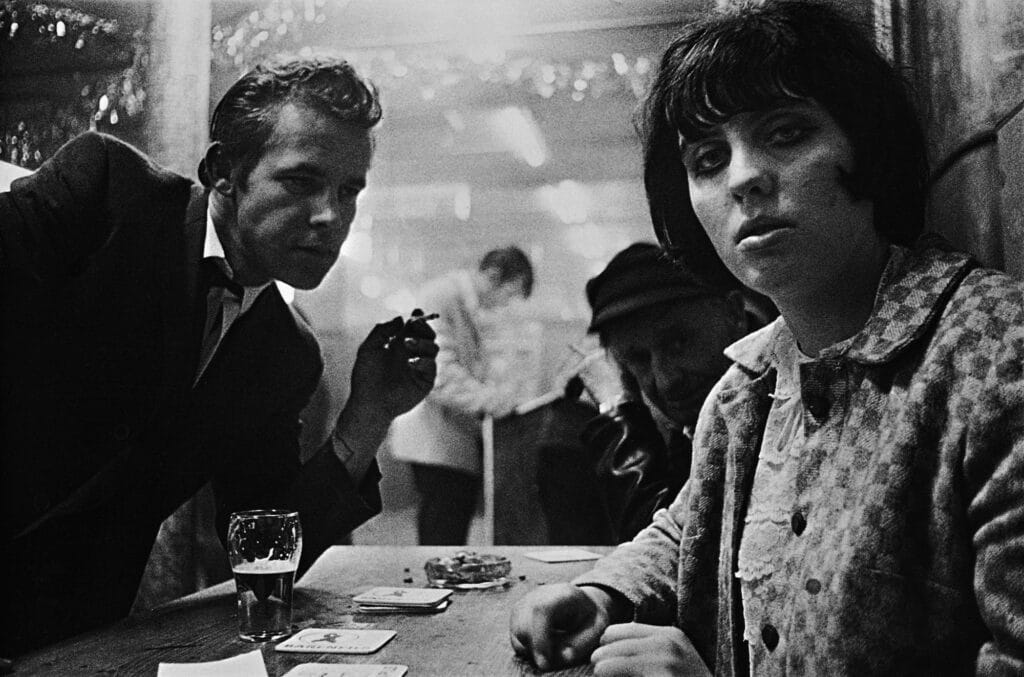I still remember the first time I saw Anders Petersen’s work. On the walls at Fotografiska New York just last year, his images of the bar Café Lehmitz, taken in 1960s Hamburg, Germany, practically leapt from the walls. His subjects made the images: the sailors, sex workers, strangers, and strays whose laughs I heard, whose beer I tasted, whose music I danced to.
The photographs were so immersive, so indicative of a moment I almost felt like I was there myself, leaning on the pinball machine, nestled into a booth, hearing harmonicas and dogs and the crunch of a weathered leather jacket.
The plonk of a shot glass, the crackle of a lighter. I know I can’t be the only person who’s ever felt that way in the 60 years since the photos were taken, especially with the re-release of Café Lehmitz from Prestel this month.
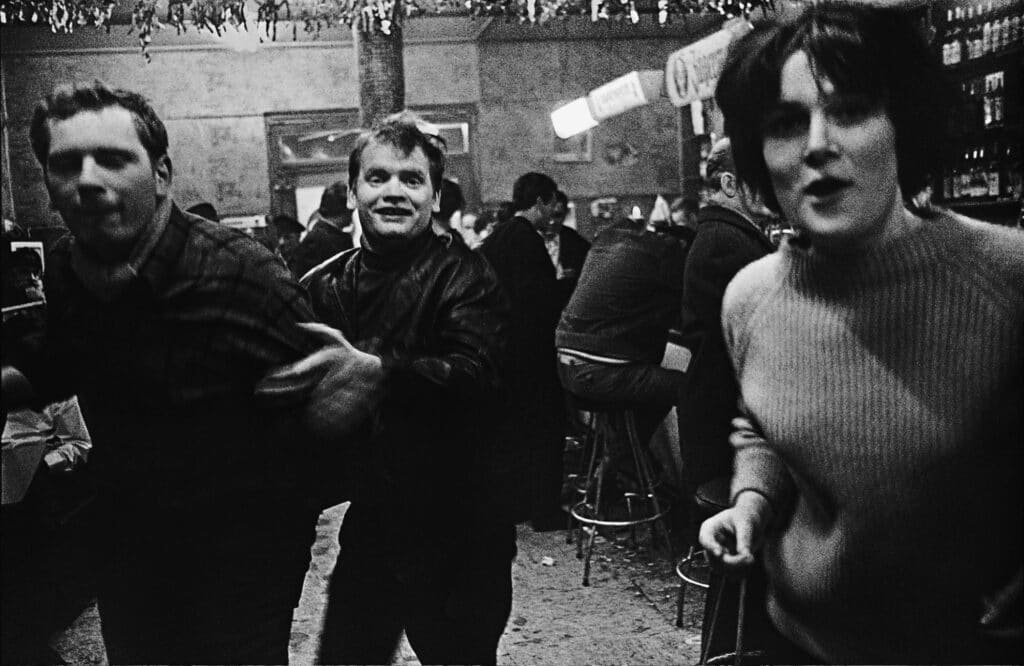
Internationally regarded work
Petersen’s pictures of the bar were taken between 1968 and 1970, then published as a monograph in 1978. In that time, Café Lehmitz has become an internationally regarded work of documentary photography, not to mention an album cover for the 1985 Tom Waits album Rain Dogs.
“Anders Petersen has the eye of a poet”
Incidentally, Waits wrote the foreword to this edition, in which we learn that he is among those of us who also danced, in metaphor, to the music of the Lehmitz. “Anders Petersen has the eye of a poet,” Waits writes. “How else could you hear, when you look at his pictures, Lili Marlene coming out of a pawnshop clarinet or smell bockwurst mixed with tiparillo smoke next to the busted toilet?”
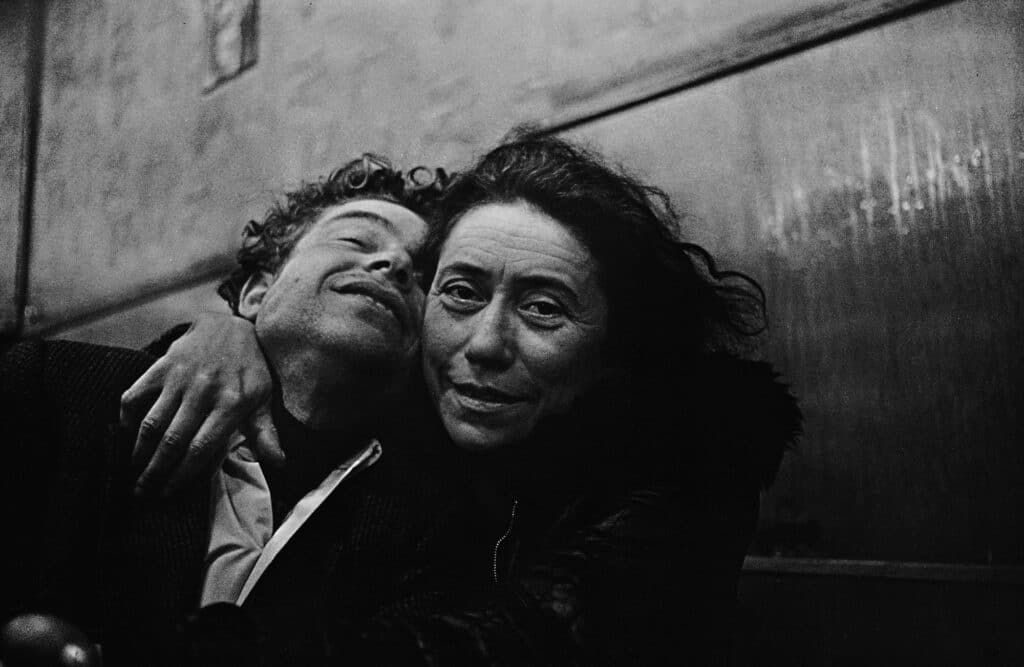
Petersen began taking these pictures at the age of 23 while studying photography in his native Sweden. He worked constantly to pay for school, to live, to pay for trips to Germany to shoot pictures at the bar, hitchhiking to get there when he could. His life at that time, he says, was not much different than those he photographed.
“They were thieves, prostitutes, pimps. Homeless. And old sailors, of course. [It is] a place where they can go to meet friends and not feel so alone. To go there to have a good time,” he says. “Of course, it depends what kind of glasses you have on.” He remembers their stories from World War II, sitting with them, seeing his camera get passed around on his first night there, seeing drugs, the occasional knife or gun.
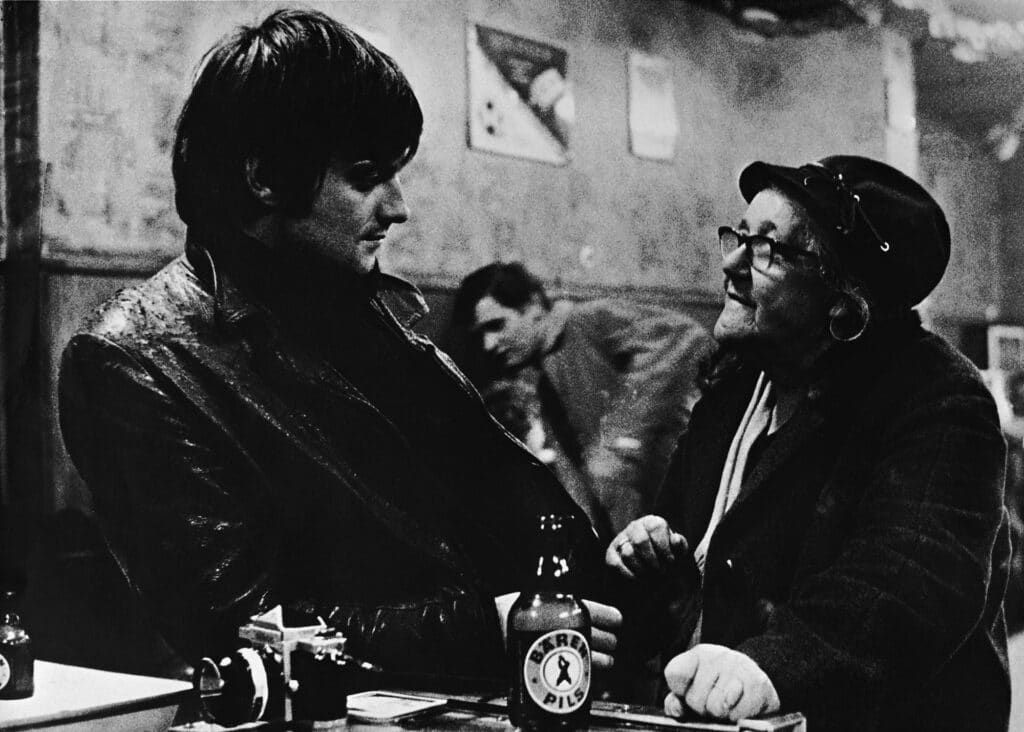
“It’s about being weak, weak enough to open up”
The Lehmitz and its people kept pulling him back. He became close to them, developed relationships, and the first photo show he ever had was images hung over the bar — if anyone recognized themself, they were allowed to keep the image. His voice becomes wistful when he talks about them now — he knows many are gone. “The life in Cafe Lehmitz was a short life,” he says. But while it happened, what a life it was.
“I’ve always been interested in what is behind the doors. Not the outside so much. I am more interested in how people are living and what kind of relations they have to each other,” Petersen says. “I don’t want to be far away from that. I want to be close. I want to be able to touch them. You know, to smell them.”
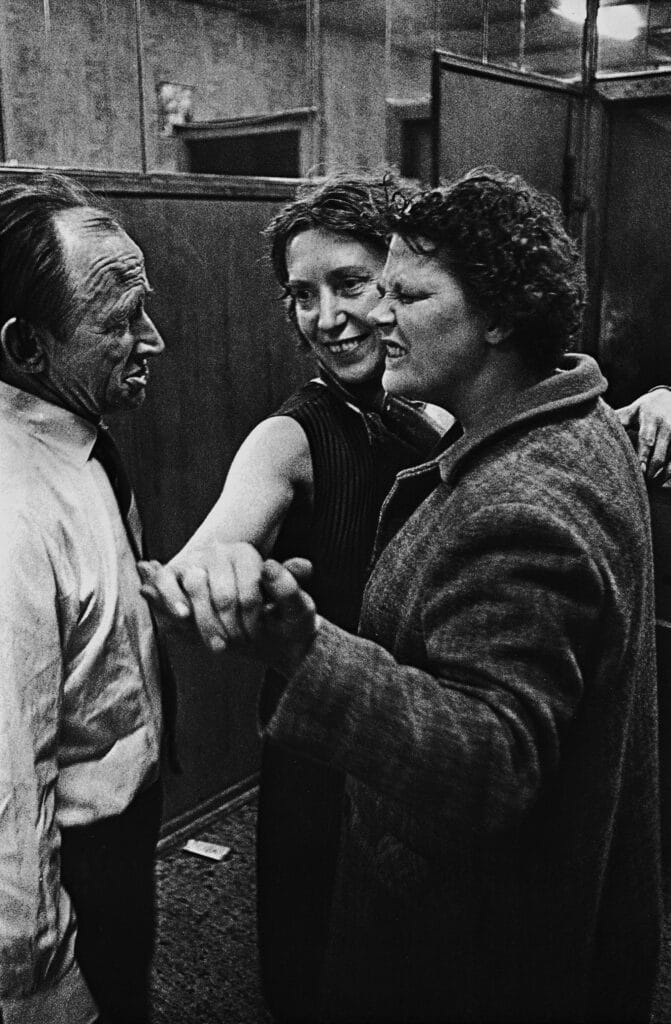
With that closeness comes vulnerability, which Petersen says is an essential part of being a photographer. Indeed, it’s because Petersen was able to get so close to his subjects that the images as they are became possible at all. “It’s about being weak, weak enough to open up,” he says, “not hiding behind your camera and being a warrior. This is no good. No good at all.”
This was something Petersen says he had to temper as he continued making images in the decades that followed, learning to have one foot in and one foot out. Still, he was always curious about what was at stake, which started on the Reeperbahn with Lehmitz and continued in his future work.
“I don’t like photography where you can feel there is no risk”
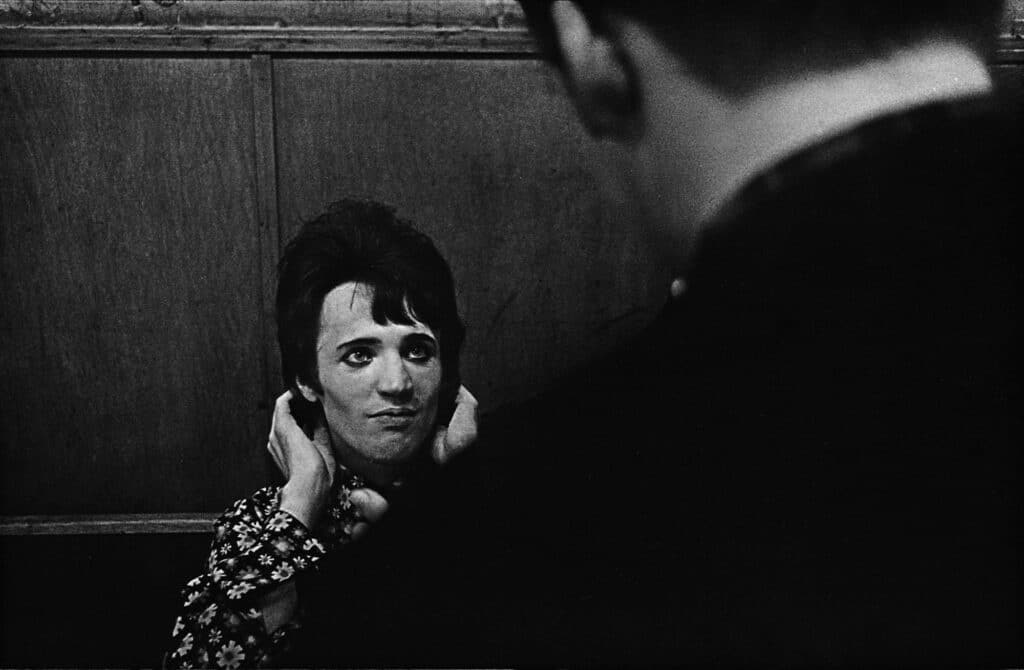
“I don’t like photography where you can feel there is no risk. You know, where I can’t feel the personality behind the camera,” he says. He took this ethos with him as he worked in a nursing home, a prison, and a mental health hospital in the following decades. But Petersen points out that his images are often misinterpreted. He’s not looking for misfits.
At the core of his work is a desire for connection and an understanding of people. “People have many times misunderstood my shooting. They think that I’m only interested in people outside the society. I’m not, not at all. I’m just interested in something I can connect with their person, in their personality,” he says. “They’re inside the society. It’s something else sublime that I’m looking for.”
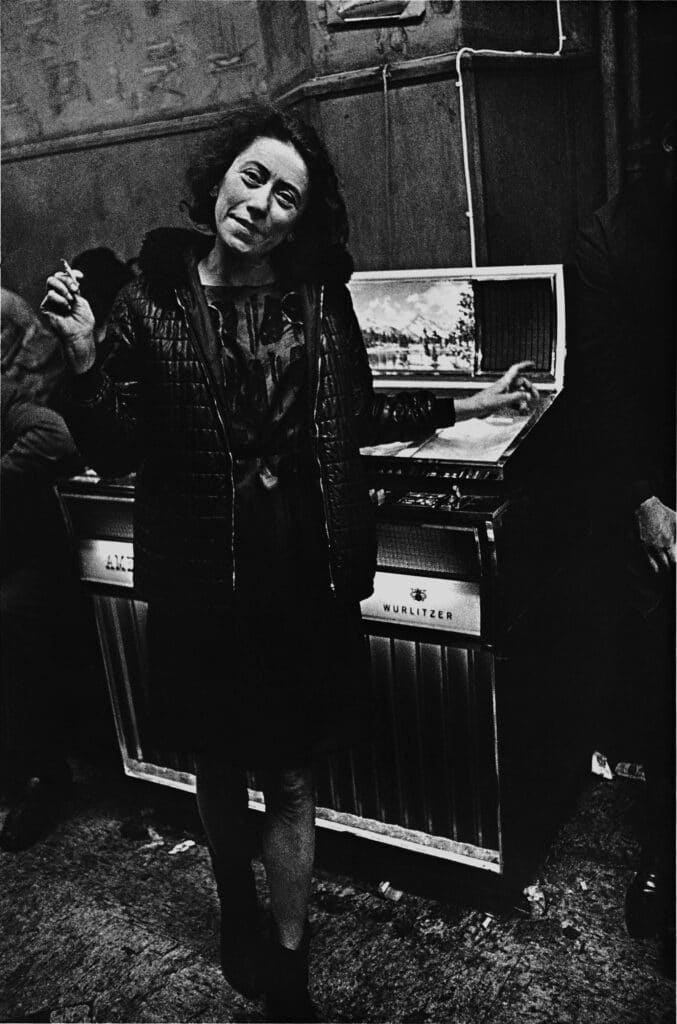
In this vein, it’s worth noting that Petersen primarily uses a Contax T3, what he calls an amateur camera. It’s a small 35mm camera, which both allows and forces him, and thereby us, to get close to his subjects.
“I’m looking for the contact and situations and the tenderness in people”
“If you’re going around a lot, if you see people, you understand more and more that you are belonging to each other. It doesn’t matter where you’re coming from. It doesn’t matter if you live in Stockholm, New York or in Tokyo,” he says. “I’ve been around for 55 years, something like that, shooting. You know, the more you do that, the more you understand [that] we are a family. I mean that the people you’re shooting, they’re brothers and sisters… it sounds very romantic, but if you really see behind, that’s the way it is.”
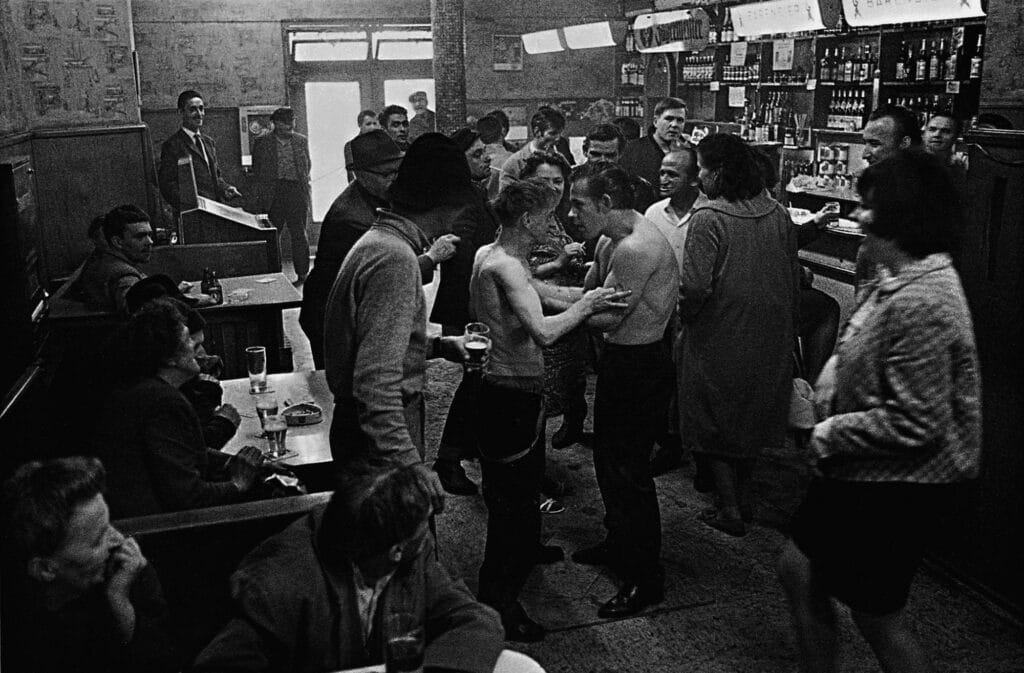
I wonder if that’s why his work continues to resonate so deeply with people the world over, because we see something in the lives at Lehmitz that we see in ourselves. It’s something Petersen saw, too, as if the camera allowed him to be less concerned with composition and more concerned with the depths of the person in front of it. “I’m not looking for forms and light so much,” he says. “I’m looking for the contact and situations and the tenderness in people.”
Café Lehmitz by Anders Petersen, Prestel Verlag, 2023, 40$.
